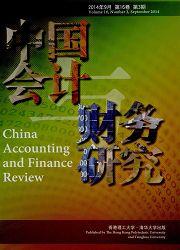Does the order of claims to assets on the balance sheet reflect equity risk?
引用次数: 0
Abstract
PurposeThis paper empirically examines whether the order of liability and preferred stock accounts presented on the balance sheet is consistent with how the stock market values their riskiness.Design/methodology/approachThis paper measures a firm’s riskiness with idiosyncratic risk and employs the first-difference design to test the relation between idiosyncratic risk and the order of current liabilities, noncurrent liabilities and preferred stock, respectively. Further, the paper tests whether operating liabilities are viewed as riskier than financial liabilities. Finally, the authors partition their sample based on the degree of financial distress and investigate whether the results differ between the two subsamples.FindingsThe paper finds that current liabilities are viewed as riskier than noncurrent liabilities and preferred stock is viewed as less risky than current and noncurrent liabilities, consistent with the ordering on the balance sheet. Further, the paper finds that operating liabilities are viewed as riskier than financial liabilities. Finally, the authors find that total liabilities and preferred stock (redeemable and convertible classes) are viewed as riskier for distressed firms than for nondistressed firms.Originality/valueThe authors thoroughly investigate the riskiness of several classes of claims and document that the classification of liabilities and preferred stock classes is relevant to common stockholders for assessing their associated risk.资产负债表上对资产的债权顺序是否反映了权益风险?
目的实证检验负债和优先股账户在资产负债表上的排列顺序是否与股票市场对其风险的估值一致。设计/方法/方法本文以特质风险来衡量企业的风险,并采用一差设计分别检验特质风险与流动负债、非流动负债和优先股顺序之间的关系。此外,本文还测试了经营负债是否被视为比金融负债风险更大。最后,作者根据财务困境的程度对样本进行了划分,并调查了两个子样本之间的结果是否不同。研究发现:流动负债被视为风险高于非流动负债,优先股被视为风险低于流动负债和非流动负债,这与资产负债表上的顺序一致。此外,本文发现经营负债被认为比金融负债风险更大。最后,作者发现总负债和优先股(可赎回和可转换类别)被认为对陷入困境的公司比对非陷入困境的公司风险更大。原创性/价值作者彻底调查了几类索赔的风险,并证明负债和优先股类别的分类与普通股股东评估其相关风险有关。
本文章由计算机程序翻译,如有差异,请以英文原文为准。
求助全文
约1分钟内获得全文
求助全文

 求助内容:
求助内容: 应助结果提醒方式:
应助结果提醒方式:


